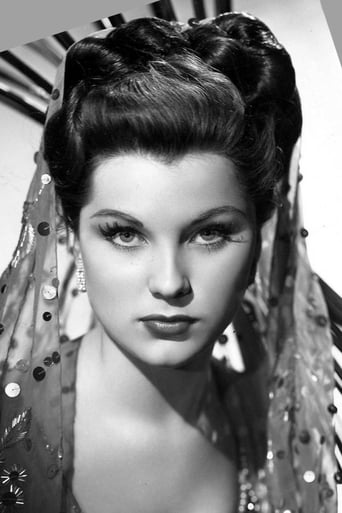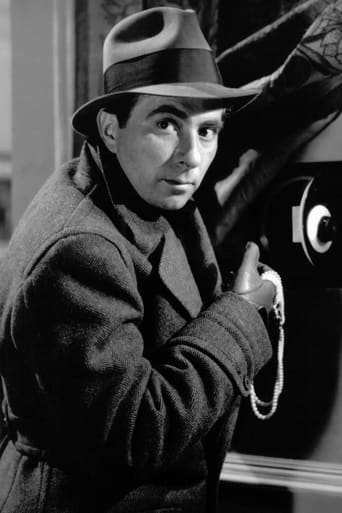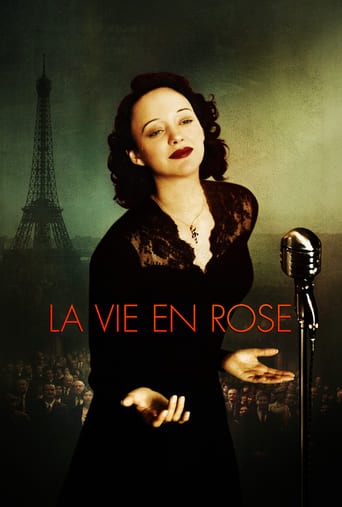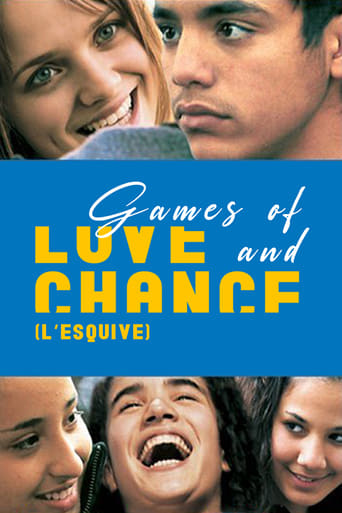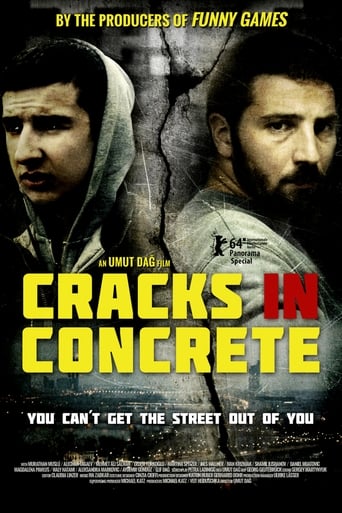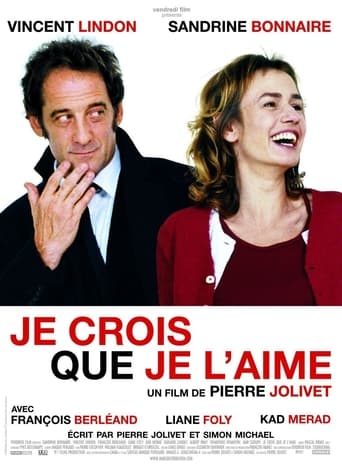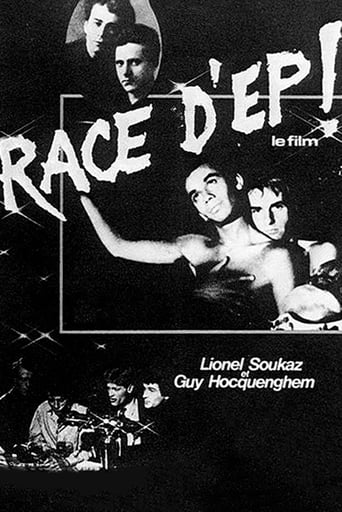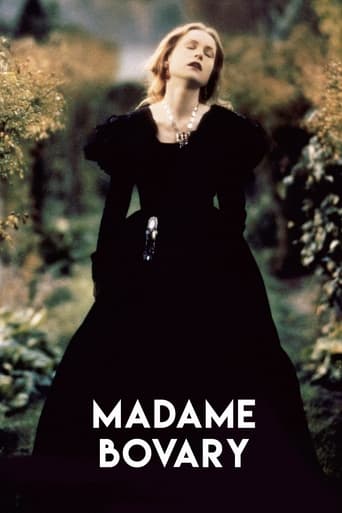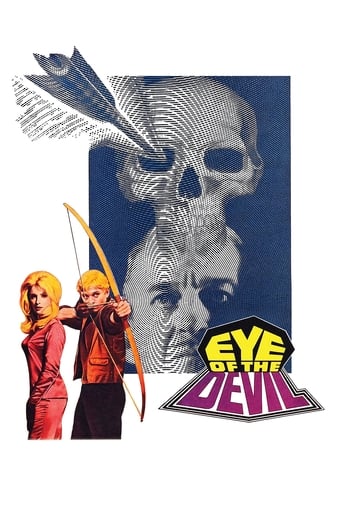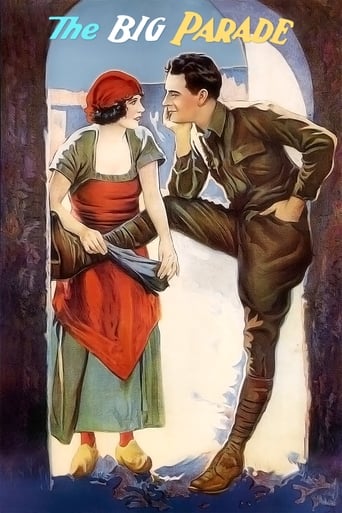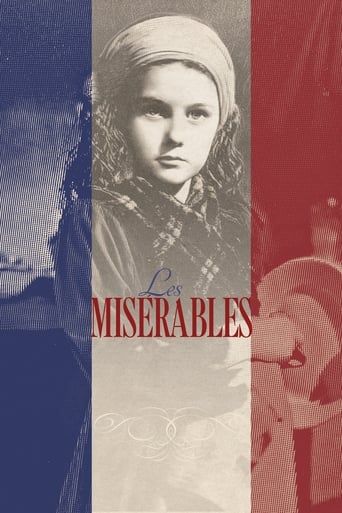

Les Miserables (1952)
Jean Valjean, a Frenchman of good character, has nevertheless been convicted for the minor crime of stealing bread. A minor infraction leads to his pursuit by the relentless policeman Javert, a pursuit that consumes both men's lives for many years.
Watch Trailer
Cast
Similar titles
Reviews
Very Cool!!!
The Worst Film Ever
There is, somehow, an interesting story here, as well as some good acting. There are also some good scenes
Like the great film, it's made with a great deal of visible affection both in front of and behind the camera.
Hollywood strikes again...Michael Rennie starts an Jean Valjean a convict who escapes captivity and then sets about redeeming his life. Once he thinks he has his life in order he is found by Javert a policeman who will stop at nothing to uphold the law.Miscast (I think only the supporting roles seem right) and horribly abbreviated this film plays like a greatest hits version of the story with everything geared to getting to the next key bit. The result is all of the characters seem like cardboard cut outs rather than real people. Its not bad but there are so many other better, versions of the story I think its a waste of time and effort to see this one.Watching the the film on Turner Classic Movies tonight I was struck by the horrible thought that once I got through the film I would never have to see it again. Personally I would rather watch the version by Raymond Bernard again or almost any of the other version of the story.
As a movie standing on its own I'd say its watchable but beyond that I am not able to muster any positive feelings.As a great fan of the book (and the musical that came years after this movie version) I am horrified by the major changes that were made to the story. To completely cut out the characters of Eponine and Enjorlas, and a little less so, the Thenardiers alone is something horrible.Also, it seemed to focus more on Marius and Cosette's relationship than Valjean.Overall, I would not recommend it to anyone who is a fan of the book or the Les Miserables fandom in general. If you really want to watch a movie version I would suggest the 1934 one.However if you have no previous experience with Les Mis then you may enjoy it more than I did.
Watchable version of the oft-filmed Victor Hugo tale: made by the same studio (Fox), it emerges as a wholly inferior remake of the superb 1935 version – which I reviewed earlier this month. Despite Milestone’s involvement, this one displays more surface gloss than genuine style – with the script itself being much more prosaic. Still, there’s an intermittent evidence of talent throughout – for instance, in the rather effective final shot which frames the mirror image of the protagonists between the all-important candlesticks; also worth noting is the score by Alex North which, particularly at the climax, feels like a dry run for his Oscar-nominated work on SPARTACUS (1960).Michael Rennie and Robert Newton are fine actors, but their performances here are no match for Fredric March and Charles Laughton in the earlier film; though Newton is remarkably restrained, his role has been somewhat diminished to accommodate the sappy romance involving Debra Paget and Cameron Mitchell! Besides, it’s compromised by the loss of two small but important scenes from the 1935 version which, in this case, robs the character of essential depth: a) when Javert is humiliated by his peers for his lowly background, and b) when he blackmails newly-appointed Mayor Jean Valjean, a former convict, in his office; unbelievably, it substitutes the first by having Javert’s own father serve a prison sentence on the galley to which he’s himself assigned!Other conceptual flaws include: Edmund Gwenn’s pivotal role of the Bishop, which comes off as whimsical alongside Cedric Hardwicke’s haunting turn in the earlier film; Valjean is depicted as an illiterate who receives schooling from the intellectual played by Joseph Wiseman (his Method approach feels out of place in a 19th century French setting!); Javert’s conscience-stricken demise here is, disconcertingly, brought about by his brief conversation with James Robertson Justice (as Valjean’s right-hand man); missing from the narrative, though, is the poignant character of Eponine (whose role gave a plausible melancholia to the romantic angle in the 1935 film).Ultimately, I wouldn’t call the 1952 LES MISERABLES unnecessary, considering that it’s made with undeniable professionalism and the fact that countless other film versions have followed it; perhaps, the late eminent critic Leslie Halliwell summed it best in his claim that it’s “lacking the spark of inspiration”.
As a huge fan of the book and the musical, I have made it one of my priorities to see all of the movie versions of Les Miserables that I can. I can officially say now that this version is probably the furthest from the book, except perhaps the 1998 version. I cannot blame the actors, but I do blame the screenwriter and director for this slaughter of a classic.The movie was okay up until the judge sentenced Valjean to ten years in the galleys. Valjean doesn't go to the galleys, he goes to TOULON, a PRISON CAMP where he does HARD LABOR. I could forgive this however, except that the movie only went downhill from there. The incident with the bishop is fairly similar...save that the dialogue seems to have been taken almost word for word from the 1935 version and that Mme. Magloire appears about twenty. Valjean is somehow able to buy a pottery plant after his "brilliant" idea to have everyone work on what they are best at. So much for glass beads. At this point he meets the entirely nonexistent Robert, who becomes a close friend that lives with Valjean for the rest of the movie. Why did they decide to make up characters, WHY? It was wholly unnecessary! Well...it would have been if they had stuck to the book. The way this script was going it was probably necessary.Fantine, of course, does not sell her hair. Or her teeth. Because apparently audiences of the 1950s do not want to hear about such things. In fact, she looks quite good for a woman living on the streets. Fantine is not a prostitute either, because it's bad to promote prostitution as a way to survive when you cannot support your starving child any other way. And, because everyone has to believe that good things happen to dying people, Valjean goes and fetches a not-so-young-looking Cosette, who is reunited with her not-so-sick-looking mother. Bear in mind that this sequence is not shown, eliminating the Thenardiers entirely, as well as images of a malnourished Cosette. Apparently everyone is well aware Fantine is going to die, yet they go about their day ever-so-happily.They end up at "The Convent of the Child Mary" because Petit Picpus is too hard to say. The sequence of meeting Marius in the convent is rather random, as is Marius' later accusation of Valjean being in love with Cosette. This IS NOT TRUE. Why? Why do so many directors and screenwriters think he's in love with Cosette? It's not TRUE. Anyway, Marius, not seeming overwhelmingly disheartened when Valjean won't let him marry Cosette (and also says they're leaving for England), ends up at the barricades. It's not really ever explained why there's a barricade in the first place. There just is. It's just a bunch of random people (and by that I mean, about five times as many in the book. It's 40, not 200) So Valjean intercepts Marius' letter to Cosette...which says something to the effect of "Your father is a jealous, horrible person. If I live, you should run away and elope with me." Totally opposite, of course, from the "I'm going to die, and I love you" letter that should be sent. Valjean seems to go to the barricade more to convince himself he's unselfish than to save Marius.Then comes the sewer chase. The sewer chase upset me for one reason, and one alone. There was a skull on the sewer ledge. Just a skull. Not even a skeleton. Because so many people go down into the sewers and some how decapitate themselves such that their head remains on the ledge and their body floats away. It was so CORNY! I laughed very hard when I saw that skull. It also appears to be a flashback to the 1935 movie, where there was one present in those sewers as well.Thanks to bad character development and a bad script in general, Javert's suicide seems entirely uncalled for. And Valjean watches. And the movie ends. And I start to cry and laugh simultaneously.I am very upset at the plot changes, as well as the cuttings of Enjolras, Eponine, and the Thenardiers. I am upset that Valjean was a brute with few redeeming qualities throughout the movie, and that they did not show his confession to Marius nor his death. I am upset at the horrid characterization of Javert, who was among other things short, rotund, and non-menacing. I am upset that Fantine looked perfectly fine and got to see a thirteen-year-old Cosette again. I am upset that Marius was an unattractive, 35-year-old man without a background story to help you understand his character. I am upset at the addition of "Robert" into the story. I am upset that absolutely no one in a movie about the poor and miserable was poor and miserable except the galley slaves. In fact, Gavroche may have been the only character whose original attitude and appearance remained the same, though many of his scenes were cut entirely and he served more as a messanger than anything.Some other unexpected defects in this wretched movie were the costumes. The costumes did not look at all like the clothes of 19th century Parisians, except for the National Guard uniforms. The hats, in particular, were very wrong for the time. It was saddening that no one did any research on this kind of thing.The trailer advertised it as "A movie as great as the book!" The people who created this trailer must have never read it.

